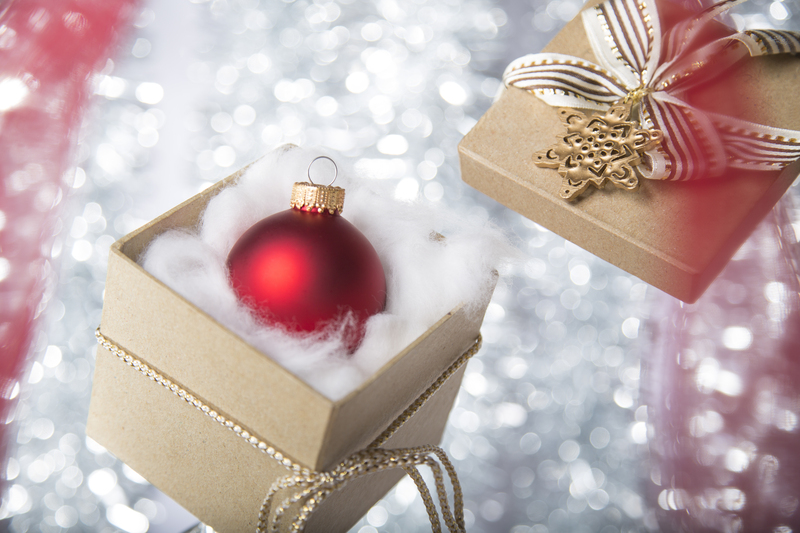Breathe New Life Into Old Cookware: Disposal and Recycling Explained
Are your pots, pans, and baking dishes showing signs of age or damage? Instead of tossing them into the trash, have you ever considered how you can breathe new life into old cookware? Discover the best ways to dispose of old cookware responsibly, uncover creative recycling ideas, and join the movement for a more sustainable kitchen. In this comprehensive guide, we'll cover everything you need to know about the recycling and disposal of old cookware--making it SEO-friendly, reader-friendly, and Google-loved!
Why Proper Disposal of Old Cookware Matters
Every year, millions of pieces of cookware--worn-out Teflon pans, chipped ceramic dishes, bent baking sheets--end up in landfills. Many of these objects are made with materials that could be reused or recycled. Responsible old cookware disposal not only minimizes environmental harm, but can also open up opportunities for creative reuse.
The Environmental Impact
- Waste Accumulation: Traditional cookware is commonly made from metals, ceramics, and plastics, all of which persist in landfills for decades or centuries.
- Resource Recovery: Many old pans and pots are crafted from valuable metals like aluminum, copper, and stainless steel, which can be recycled and fed back into manufacturing streams.
- Household Hazard: Discarding non-stick pots and pans irresponsibly can release chemicals like PTFE (Teflon) into the environment.

Which Old Cookware Can Be Recycled?
Most cookware consists of one or more core materials. Before discarding, it's important to identify these materials to choose the best cookware recycling option. Here's a breakdown:
- Stainless Steel Cookware: Highly recyclable, often accepted by scrap metal yards.
- Cast Iron: Extremely durable and valuable for scrap, plus suitable for upcycling.
- Aluminum Pans: Lightweight, easily recycled at dedicated centers.
- Copper Pots: In high demand at recycling centers; pure copper is especially valuable.
- Nonstick (Teflon-coated) Pans: More challenging to recycle because of the chemical coating.
- Ceramic and Glass Bakeware: Somewhat less recyclable due to mixed materials; best to check with local facilities.
What about Plastic Cooking Utensils?
Many plastics are not readily accepted by recycle centers, especially when mixed with metal or if the plastic is contaminated by food residue. It's essential to check with your local municipal recycling guidelines.
How to Dispose of Old Cookware Responsibly
Not all old kitchenware needs to see the landfill. Here's your step-by-step guide to environmentally friendly cooking equipment disposal:
Step 1: Evaluate Condition - Is Repurposing Possible?
- Minor Damage? Even scratches or stains can be covered for decorative reuse or garden planters.
- Still Functional? Consider charity donation or gifting to someone setting up a new household.
Step 2: Donating Usable Cookware
- Charities and Thrift Stores: Accept gently used kitchenware--call ahead to confirm what they can take.
- Soup Kitchens or Shelters: Often appreciate functioning pans and pots.
- Local Buy Nothing Groups: Try neighborhood networks to give away unwanted cookware directly.
Step 3: Recycling Old Pots and Pans
- Remove Non-Metal Parts: Unscrew handles or discard plastic lids before recycling.
- Scrap Metal Centers: Most metal cookware is welcome--even rusted or broken.
- Community Recycling Days: Some municipalities hold special collections for bulky household items.
- Contact Manufacturers: Rush to their websites to check if they offer take-back programs (some premium brands do!).
Step 4: Special Disposal for Nonstick Cookware
- Check Local Regulations: Some centers refuse Teflon-coated pans due to chemical additives.
- Mail-Back Programs: Emerging recycling initiatives can process hard-to-handle cookware--explore online options.
- Reuse as Planters or Storage: If recycling isn't possible, consider transforming them for storage or gardening.
Step 5: Upcycling - Get Creative!
- Garden Beds or Flower Pots: An old steel pot makes a durable patio planter!
- Wall Art: Arrange old pans or lids in a fun formation for an industrial-chic kitchen look.
- Craft Projects for Kids: Let kids use old utensils in painting or sculpture projects.
Where to Recycle Old Cookware
Not all locations accept old cookware curbside. To ensure your kitchen equipment recycling goes smoothly:
- Scrap Metal Dealers: Google "local scrap metal recycling" and call about their requirements.
- Council Recycling Centers: Many community waste stations have drop-offs for mixed metal items.
- Brand Recycling Schemes: Some companies (like GreenPan, Calphalon, enameled cast iron brands) offer take-back recycling for customers.
- Earth911 and RecycleNation: Use their online tools to find the nearest receptive center.
Disposing of Old Nonstick and Teflon-Coated Pans Safely
Disposing of nonstick cookware requires extra care due to potential chemical contamination.
- Separate Metal from Coating: If possible, strip off metal handles for recycling separately.
- Hazardous Waste Sites: Some regions accept coated pans through hazardous waste days.
- Check for Take-Back Programs: Some brands or specialty mail-back programs are developing solutions for nonstick pans.
- Last Resort: If recycling isn't an option, wrap in newspaper and dispose in regular trash to reduce exposure risk.
How to Upcycle and Reuse Old Cookware
Before final disposal, give your beloved cookware one last chance at life! Here are inspiring upcycling ideas for old pots and pans:
- Hanging Pan Racks: Securely attach old lids or frying pans to a kitchen or workshop wall for tool storage.
- Succulent Gardens: Layer gravel and soil in old enameled pans for a hip indoor garden.
- Birdbaths or Feeders: Large pot lids make excellent bird table surfaces outside.
- Storage Containers: Deep cooking pots--minus the handle--make quirky storage bins for toys or tools.
Don't forget, creative reuse not only diverts waste from landfill but adds personal charm to your living space!
FAQ - Your Questions About Cookware Recycling Answered
Can You Put Old Pots and Pans in the Recycling Bin?
Usually not! Most municipal curbside programs don't allow cookware in regular recycling bins. Always check first--misplaced pans can jam recycling equipment.
Can I Donate Cookware with Damaged Nonstick Coating?
No. Flaking or peeling nonstick surfaces are unsafe for cooking and should not be donated. Instead, recycle or upcycle as outlined above.
Do All Scrap Metal Yards Take Old Cookware?
Most do, especially if it's pure stainless steel, cast iron, or aluminum. Be sure to remove all plastic or wooden parts.
Are Pan Handles Recyclable?
Wooden or plastic handles usually aren't accepted for recycling, but metal screws and fixtures can be.
How Can I Tell if My Cookware is Recyclable?
If it's solid metal (steel, iron, copper, or aluminum) and doesn't have extensive nonstick coating, it's likely recyclable. Otherwise, consult your local recycling center.
Sustainable Brands: Cookware Take-Back & Recycling Programs
Many forward-thinking companies are now making it easier to recycle old kitchenware, closing the manufacturing loop:
- GreenPan: Offers Cookware Recycling Program in the US--return any brand's frypans for responsible recycling.
- Le Creuset: Has regional programs for returning enameled cast iron pieces.
- Calphalon: Runs a Take-Back program (check availability and mail-in details)
- Local Kitchenware Stores: Some independent shops collect damaged cookware for consolidated recycling.
If your favorite brand doesn't advertise recycling, contact their customer service directly--a little demand can create change!

Creative Upcycling: DIY Ideas to Breathe Life Into Old Cookware
- Wall Clocks: Drill a hole in the center of an old lid, add clock hands and mechanism for a kitchen clock.
- Decorative Trays: Spray paint baking sheets or shallow pans and use as quirky serving trays.
- Garden Art: Stack old pots for a totem pole, or use as stands for potted plants.
- Lid Mirrors: Affix a mirror inside a pot lid for a rustic bathroom accent.
Tip:
Always wash and dry cookware thoroughly before any DIY or charity drop-offs!
Conclusion: Make Your Cookware Last and Break the Cycle
From reducing landfill waste to giving back to the community and personalizing your home, there are countless ways to breathe new life into old cookware. Whenever you replace a trusty old skillet or worn-out baking dish, pause and ask--can it be recycled, donated, or creatively upcycled?
- Recycle whenever possible: Metals, especially steel, iron, and aluminum, are valuable resources.
- Donate usable items: Charities, shelters, and families in need will thank you.
- Upcycle for fun and function: Don't overlook the satisfaction of a unique, repurposed household item.
Together, we can minimize waste and make the most of every kitchen staple. Choose smart cookware disposal and recycling--and inspire others to do the same!
Breathe new life into your old cookware--the planet (and your home) will thank you!
